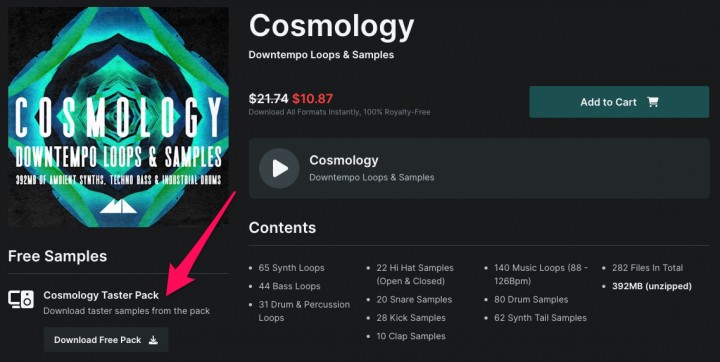
If you weren't aware yet, we recently started adding 'taster packs' for each of our products, which you can find on the product page for each pack.
These tasters allow you to download a small selection of free samples from the pack, to give you an idea of what's available in the full product, and also let you get creative with some new sounds in your own sample library!

In this short article, we're going to take a look at 5 ways in which you can get creative with loops and make them your own.
We'll be using the free loops contained in our Outrun - Synthwave Loops taster pack, and looking at 5 ways to flip them.
We're focussing specifically on the Synthwave genre for this article, but there's no reason why you can't apply the same techniques no matter the style!
Let's dive in!
1. Automate Clip Gain

With clip gain automation, we can creatively apply changes in the volume at different points of a loop, and transform the rhythm into something new.
You can see here that i've dropped the gain right down at various points in the loop, in subdivisions of 8th notes, so it's like hitting the 'mute' button in a rhythmic fashion.
This is a great technique to use on Synthwave basslines as they often consist of straight 8th note patterns, so we can just drop out the occasional note and instantly give a more syncopated feel to our bass:
2. Chop & Re-sequence Drums

Synthwave drum loops are often quite simple and sparse, due to the nature of the genre, making them a good candidate for slicing up and re-sequencing.
We covered this technique in our previous article Turn Drum Loops Into Drum Kits In Ableton Live so be sure to check that out for an in-depth dive.
In any case, with a few clicks of the mouse, we can take our Synthwave drum loop, break it up, and construct a whole new beat in no time.
Just be wary of slicing up drum loops that contain a lot of reverb, as they can sound a little strange when re-sequenced. In this case, I've set up a reverb-send on the new beat to help smooth it over. Check it out:
3. Change Sample Looping Points

Loops often come as 4 or 8 bar patterns, but did you know that by simply adjusting the looping points, we can create a whole new pattern, without moving any of the individual sounds?
In our example, we've taken the percussion loop from our set and reduced it from what should be a 4-bar loop, to a loop consisting of 7 16th notes. We've also set the loop to start playback from the second 16th note for extra rhythmic spice!
Now when we play this 'new' loop, with a strange time signature, alongside our conventional 4/4 loops, we get some very interesting cross-rhythms happening indeed.
This is a great technique to use with percussion loops or top drum loops that don't include snares, as having big kick and snare sounds always hitting off the beat could be a bit too disorientating:
4. FX & Modulation

Another great way to put your own stamp on loops is to run them through some creative FX chains.
You can feed loops through filters, distortion or space FX to completely change the feel, and if you add some modulation to the various FX parameters, you can transform the loops even more!
In our example here, we've used our free Ableton Live FX Rack, the MA Drone Groover, which you can read about and download here.
Ideal for pad or synth chord loops, our Drone Groover FX rack applies modulation to gain and filter controls to add some rhythmic dimension to sustained sounds:
5. Convert Melodies to MIDI

Have you ever thought "I like the melody of this sample, but I bet it would sound great on another synth"? Well, luckily many DAWs offer a quick way to extract the melodic and rhythmic elements out from a loop.
In Ableton Live for example, you can simply right-click on your sample and select "Convert Melody to New MIDI Track", and a new MIDI channel and clip will be automatically created for you - no need to go through the painstaking process of figuring it out on your own!
All you need to do now is add your soft synth of choice to the channel and hey presto. In our example, I've extracted the arp melody and plugged it into a Serum preset from our pack Replica - Serum Synthwave Presets.
It's worth noting that the conversion process rarely gets things exactly correct, but in my opinion this can often lead to more interesting and unexpected results!
Let's put all the loops together and hear the before and after, applying all our different creative techniques to make our loops more unique:
And that's it! Hopefully you can see that it's possible to take only 5 loops and really develop the musical ideas within - just applying some simple production tricks.
With these techniques alone, you can imagine extrapolating a full arrangement out of just those 5 loops that contains plenty of musical interest.
Be sure to look out for taster packs on our product pages and give it a try yourself!













